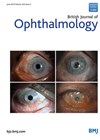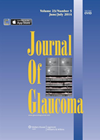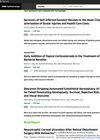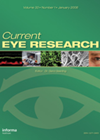You searched for "IOP"
DIY IOP – does it work?
1 February 2018
| Eulee Seow
|
EYE - Glaucoma
Measuring intraocular pressure (IOP) plays a major role in glaucoma care as IOP is a parameter, along with visual field progression and optic disc cupping used to assess treatment effect. While Goldmann tonometry (GAT) is the gold standard, it only...
IOP in children with uveitis
1 August 2019
| Jonathan Chan
|
EYE - Vitreo-Retinal
This is a retrospective study of paediatric uveitis (<16-years-old) between July 2002 to June 2016 of a total of 320 children from a single centre: 17.2 % (55/320 patients) developed raised IOP requiring therapy; 11.5% of eyes required glaucoma surgery...
Sleep positions and the effect on IOP
1 August 2014
| Lorraine North
|
EYE - Glaucoma
The authors describe a study to determine if sleeping at a 20 degree head up position decreases nocturnal IOP compared with lying supine in patients with and without glaucoma. They recruited 30 patients (60 eyes) 15 with glaucoma and 15...
IOP and reversibility of RPE detachment
1 April 2015
| Lorraine North
|
EYE - Glaucoma
The authors describe how three patients with retinal pigment epithelium (RPE) detachment showed a reduction or disappearance of an RPE detachment immediately following prone dark room test (PDRT). The authors performed spectralis OCT on 140 angle closure subjects before and...
Are single IOP measurements adequate for estimating the effect of IOP lowering interventions?
1 December 2014
| Lona Jawaheer
|
EYE - Glaucoma
The World Glaucoma Association recommends that, to assess the effect on intraocular pressure (IOP) of medication or surgery, the mean of multiple measurements of postoperative IOP is a better reflection of IOP than a single measurement of postoperative IOP. The...
Predictors of IOP reduction after SLT
1 December 2016
| Bheemanagouda Patil
|
EYE - Glaucoma
The aim of this study was to identify predictors of intraocular pressure reduction following selective laser trabeculoplasty (SLT) in patients with primary open-angle glaucoma, who are already taking maximally tolerated IOP-lowering medication and need further IOP reduction. In this prospective...
High myopes with POAG and IOP fluctuations
1 April 2014
| Lorraine North
|
EYE - Glaucoma
The authors describe a prospective study of 80 eyes of Chinese patients with primary open-angle glaucoma (POAG) on prostaglandin analogues to investigate if those who also have high myopia exhibit greater short-term intraocular pressure (IOP) fluctuations at resting conditions over...
IOP measures after intraocular chemotherapy
This study aimed to describe the relationship between intravitreal chemotherapy and IOP in children with retinoblastoma and identify risk factors for pronounced elevations. This was a retrospective study of ten cases (ten eyes) with 17 encounters overall. Mean age was...Brimonidine day and night time IOP
1 October 2014
| Lorraine North
|
EYE - Glaucoma
The authors describe a randomised double masked study of 29 participants with ocular hypertension (OHT) who either self-administered 0.2% brimonidine or placebo three times daily for six weeks. Patients were seen during day time and night time visits and had...
Under pressure: the constant drive to improve IOP monitoring
1 April 2025
| Zhihang Cheng
|
EYE - Glaucoma
The authors offer a comprehensive overview of interplay between glaucoma and intraocular pressure (IOP), IOP measurement principles and historical measurement techniques and progress in IOP measurement devices. The authors explore the issues surrounding current thinking in IOP measurement and its...
Mono vs. multi-therapy in IOP control
1 December 2018
| Eulee Seow
|
EYE - Glaucoma
This randomised control trial studied newly diagnosed glaucoma patients given mono‐ or multi‐therapy regarding differences in initial intraocular pressure (IOP) reduction, target IOP levels reached and influence of untreated baseline IOP on IOP reduction. Patients newly diagnosed with manifest primary...
Effect of refractive corneal surgery on IOP and glaucoma progression
1 December 2018
| Kurt Spiteri Cornish
|
EYE - Glaucoma
Accuracy of intraocular pressure (IOP) measurement depends on the biomechanical properties of the cornea, including its thickness central corneal thickness (CCT) and keratometry (K). Fifty-six eyes of 56 patients with primary open angle glaucoma (POAG) who had a history of...















